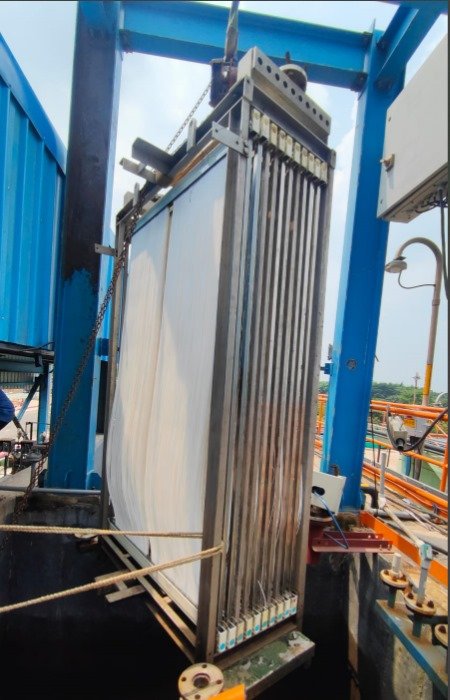Why MBR is the Gold Standard for Wastewater Treatment
In the world of wastewater treatment, standing still means falling behind. Traditional methods like Activated Sludge Systems (ASP) and Sequential Batch Reactors (SBR) have served their purpose, but they rely on gravity-based separation—a process increasingly challenged by modern demands. As environmental regulations tighten and the need for high-quality water reuse becomes a financial and social necessity, conventional systems struggle to deliver. Their dependence on gravity settling and sand filtration introduces inaccuracies and limitations that are no longer acceptable.
It’s time for an upgrade. Membrane Bio-Reactor (MBR) technology from Genex Utility transcends the functional problems of its predecessors, delivering a standard of treated effluent that conventional methods simply cannot achieve.
Here are the definitive advantages of the MBR process:
The Footprint Revolution: Achieve More with Less Space
MBR technology makes bulky, space-consuming clarifiers entirely obsolete. In their place, a compact, rectangular tank houses the core of the system: the membrane modules. But the real game-changer is the operational biology.
A traditional system is limited to a Mixed Liquor Suspended Solids (MLSS) concentration of around 3,500-5,000 mg/l to allow for effective gravity settling. The MBR process, however, is not bound by this constraint. By using a physical membrane for separation, the biomass concentration can be maintained at incredibly high levels—typically between 12,000 to 18,000 mg/l.
The Technical Advantage: This threefold increase in biomass concentration means the bioreactor’s physical volume can be up to one-third the size of a conventional plant handling the same load. This dramatically smaller footprint frees up valuable real estate for other operations or future expansion.
Future-Proof Flexibility for Dynamic Loads
At Genex Utility, our MBR systems are sized to operate comfortably at an MLSS of 10,000 mg/l, yet they possess the inherent capability to handle levels up to 18,000 mg/l. This provides an enormous operational advantage. When seasonal production peaks cause a spike in organic loads (COD/BOD), the system can seamlessly manage the increase without compromising effluent quality. This is like having 50% or more spare treatment capacity built-in, ensuring your facility is prepared for any eventuality.
Absolute Purity: The MBR Guarantee for Effluent Quality
The core of our system is the Steropore Hollow Fibre Membrane, which features a nominal pore size of just 0.4µm. This isn’t just filtration; it’s a physical barrier. The membrane creates an impassable wall for suspended solids, bacteria, viruses, pathogens, and other micro-contaminants.
The result is a crystal-clear effluent with virtually zero solids. This has profound downstream benefits:
No Sand Filter Needed: A traditional settlement tank followed by a sand filter might achieve an effluent with 15 mg/l of solids. Our MBR system produces an effluent of practically zero solids, completely eliminating the need for sand filters and their associated backwash water treatment.
Extended Equipment Life: With no solids to clog downstream systems, the life expectancy of polishing equipment like activated carbon filters is significantly increased, reducing replacement costs.
Disinfection Simplified: Since UV disinfection is designed to neutralize particulate microbes, an effluent with zero solids often removes the need for a separate UV stage, further cutting capital and operational costs.
This superior effluent quality is not just a regulatory achievement; it’s a valuable asset, perfect for reuse in food-related processes and other high-stakes applications.
Slash Your Sludge Disposal Costs
Operating the bioreactor at such a high biomass concentration creates a long sludge age. In technical terms, this means the organic matter is held in the system longer and is more thoroughly digested by the microorganisms. The practical benefit is a significant reduction in the volume of excess sludge produced, which directly translates to lower haulage and disposal costs—a major saving for any facility.
Simplified, Intelligent Operation
Final effluent quality in an MBR system is not a matter of guesswork. It is a function of mechanical filtration, a process continuously monitored by membrane pressures and managed by a PLC. The operational headaches of traditional systems, like conducting daily Sludge Volume Index (SVI) tests to manage settling, are completely eliminated. The system is smarter, more reliable, and requires far less operator intervention.
To meet the challenges of tomorrow, you need technology that delivers certainty, efficiency, and unparalleled quality. The MBR system from Genex Utility is the definitive choice.



